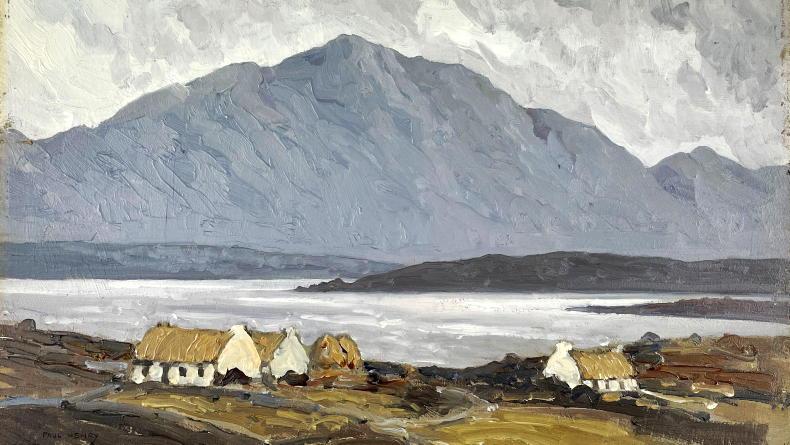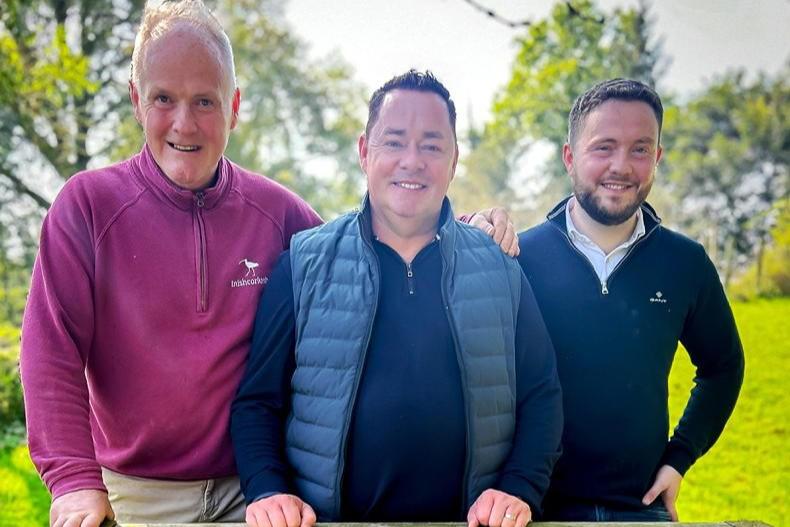As we enter 2022 with uncertainty over the staging of events, I wondered what I would do for the first column of the new year. I have to admit that my attempts to “think outside the box” were not yielding the results I hoped for.
One Sunday evening, relaxing in front of a blazing fire, I started to think about places in Ireland that I plan to visit in 2022, and, not surprisingly, my thoughts transported me to the western seaboard. To be honest, any part of the west coast – from Kerry up to Donegal – would satisfy my desire to be watching the sea.
Then I started to consider artists who depicted this part of Ireland, and the first name to come to mind was Paul Henry.
Born nearly a century and a half ago, he died in 1958, but his post-impressionist depictions of the west of Ireland have become iconic, and his work is instantly recognisable.
Henry was born in Belfast, the son of a Baptist minister. His interest in art began at a very young age and at school in the Methodist College Belfast he first began drawing regularly. At the age of 15 he moved to the Royal Belfast Academical Institution, studying art at the Belfast School of Art. In his early 20s he moved to Paris to study at the Académie Julian and at Whistler’s Académie Carmen.
He married Emily Grace Mitchell who today is best known as the painter Grace Henry, and the couple returned to Ireland in 1910. For nearly a decade they lived on Achill Island, and it was there that he learned to capture the peculiar interplay of light and landscape which is specific to the West of Ireland.
In 1919 he moved to Dublin and the following year was one of the founders of the Society of Dublin Painters, originally a group of 10 artists. During this time Henry designed several railway posters, some of which achieved considerable sales. He separated from his wife in 1929 and his second wife was the artist Mabel Young.
For two decades, throughout the 1920s and 1930s, Henry was considered to be Ireland’s best-known artist. Notable among his influences was that which he had on the popular image of the west of Ireland.
After his move from Achill he appears to have stopped experimenting with his technique which he developed there. Nonetheless, he created a large body of familiar work which remains as a testament to his influence.
Incredibly for an artist, his use of colour was affected by his red-green colour blindness. Tragically, he lost his sight in 1945 and did not regain any vision before his death eight years later at his home in Bray.
A commemorative exhibition of Henry’s work was held at Trinity College, Dublin in 1973, and the National Gallery of Ireland held a major exhibition of his work in 2004.
A painting by Henry was featured on an episode of the BBC’s Antiques Roadshow in November 2006. The painting was given a value of approximately £40,000-£60,000 by the roadshow expert.
However, thanks to the buoyancy of the Irish art market at that time, it sold just weeks later for €260,000 in James Adams’ and Bonhams’ joint Important Irish Art Sale.
Given the explosion in prices now for Irish works, one wonders what it would make today.
Read more
The Front Row: an artistic gift this Christmas
The Front Row: revival and renewal
As we enter 2022 with uncertainty over the staging of events, I wondered what I would do for the first column of the new year. I have to admit that my attempts to “think outside the box” were not yielding the results I hoped for.
One Sunday evening, relaxing in front of a blazing fire, I started to think about places in Ireland that I plan to visit in 2022, and, not surprisingly, my thoughts transported me to the western seaboard. To be honest, any part of the west coast – from Kerry up to Donegal – would satisfy my desire to be watching the sea.
Then I started to consider artists who depicted this part of Ireland, and the first name to come to mind was Paul Henry.
Born nearly a century and a half ago, he died in 1958, but his post-impressionist depictions of the west of Ireland have become iconic, and his work is instantly recognisable.
Henry was born in Belfast, the son of a Baptist minister. His interest in art began at a very young age and at school in the Methodist College Belfast he first began drawing regularly. At the age of 15 he moved to the Royal Belfast Academical Institution, studying art at the Belfast School of Art. In his early 20s he moved to Paris to study at the Académie Julian and at Whistler’s Académie Carmen.
He married Emily Grace Mitchell who today is best known as the painter Grace Henry, and the couple returned to Ireland in 1910. For nearly a decade they lived on Achill Island, and it was there that he learned to capture the peculiar interplay of light and landscape which is specific to the West of Ireland.
In 1919 he moved to Dublin and the following year was one of the founders of the Society of Dublin Painters, originally a group of 10 artists. During this time Henry designed several railway posters, some of which achieved considerable sales. He separated from his wife in 1929 and his second wife was the artist Mabel Young.
For two decades, throughout the 1920s and 1930s, Henry was considered to be Ireland’s best-known artist. Notable among his influences was that which he had on the popular image of the west of Ireland.
After his move from Achill he appears to have stopped experimenting with his technique which he developed there. Nonetheless, he created a large body of familiar work which remains as a testament to his influence.
Incredibly for an artist, his use of colour was affected by his red-green colour blindness. Tragically, he lost his sight in 1945 and did not regain any vision before his death eight years later at his home in Bray.
A commemorative exhibition of Henry’s work was held at Trinity College, Dublin in 1973, and the National Gallery of Ireland held a major exhibition of his work in 2004.
A painting by Henry was featured on an episode of the BBC’s Antiques Roadshow in November 2006. The painting was given a value of approximately £40,000-£60,000 by the roadshow expert.
However, thanks to the buoyancy of the Irish art market at that time, it sold just weeks later for €260,000 in James Adams’ and Bonhams’ joint Important Irish Art Sale.
Given the explosion in prices now for Irish works, one wonders what it would make today.
Read more
The Front Row: an artistic gift this Christmas
The Front Row: revival and renewal








SHARING OPTIONS